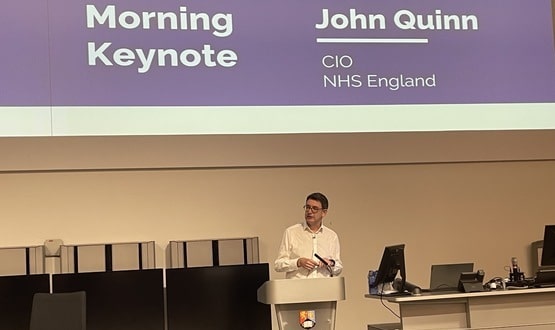VIDEO: Needlestick injuries costing NHS millions of pounds
- 20 July 2017

Healthcare workers are regularly faced with needlestick injuries (NSI) and while it might not be a standout issue, the financial implications across the NHS are damning.
According to the NHS Resolution’s annual report and accounts (2016/ 2017), it received 1,833 incident claims for needlestick injuries between 2012 and 2017 (fiscal years).
Of these, the 1,213 successful claims cost the NHS £4,077,441, but a UK-based company, NeedleSmart is now offering a technological solution to reduce injuries and costs – which is reported at more than 100,000 in the UK.
The new needle disposal technology, which can be used in hospitals, clinics and GP surgeries, takes a used hypodermic needle and transforms it into a sterile, non-sharp needle – in seconds.
NeedleSmart chief executive Cliff Kirby said the technology also has data benefits.
“Utilising the in-product Smart Technology, we can record the number of needles processed, types of needles and frequency of needles enabling real-time data.”
“This data can then be used for supple chain activity at source or a later date.”
[themify_box icon=”info” color=”gray”]
Of healthcare workers suffering from needlestick injuries across the UK:
- 30% will contract Hepatitis B
- 3% will contract Hepatitis C
- 0.3% will contract HIV/AIDS
- 80% of all needlestick injures are preventable
[/themify_box]
The patented technology heats hypodermic needles into a molten state, prior to compressing it into a ball, creating a sealed sphere of sterile metal that is no longer sharp.
It has the potential to reduce hypodermic needles to sharps bins by up to 70%; reduce post procedural NSI of up to 20%; and generate a reduction in sharp disposal costs in the order of 30%.
Designed with portability in mind NeedleSmart Professional can destroy up to 600 needles between charges, using a 12 Volt rechargeable supply.
“This allows for extensive use throughout hospitals and larger healthcare facilities while away from its charging cradle,” Kirby said.
The NHS Resolution report stated that if the NHS had not spent the more than £4 million, it could have funded 125 band 5 nurses for one year.
“The figure could be higher as 326 claims remain open. The harm and cost are largely avoidable,” the report stated.
“By failing to prevent needlestick injuries, trusts can be found to be in breach of regulations (health and safety law), which could result in notices of contravention…organisations could also face costly legal claims.”





1 Comments
I am taking serious issue with the figures in the infographic for the percentage of exposed workers who will “contract” viruses after a sharps injury. I note that no source is given for this data but I believe it to be this sentence in the 2012 ‘Eye of the needle’ report
“The risk of infection following a percutaneous injury, especially deep penetrating injuries involving a hollowbore needle or a device visibly contaminated with blood, has been **ESTIMATED** at 1 in 3 for HBV,[8] 1 in 30 for HCV,[6] and 1 in 300 for HIV.[5]”
Source : http://webarchive.nationalarchives.gov.uk/20140714091731/http://www.hpa.org.uk/Publications/InfectiousDiseases/BloodBorneInfections/EyeOfTheNeedle/1212EyeoftheNeedle2012Report/
However, the reference cited for the 1 in 3 claim for Hepatitis B virus (HBV) dates back to 1998. And the ‘Eye of the Needle’ report itself suggests the figures are much lower.
“Contraction” of the virus would require seroconversion to take place – the body to have mounted antibodies against the virus antigens.
For Hepatitis C Virus (HCV), looking at Table 1 in the 2012 report suggests that for 2049 percutaneous needlestick exposures between 1999 and 2012, there were only 14 Hepatitis C virus seroconversions (14/2049 * 100 =0.6%, not 3%)
Table 4 in the 2012 report actually states that for all 1001 percutaneous exposures, there has only been one HIV seroconversion for the whole period 1999-2012 ; (1/1001 = 0.09% , not 0.3 %
For Hepatitis B Virus (HBV), infections can be treated with post exposure vaccination. And page 21 of the report states
“There were _NO_ cases of seroconversion amongst the HCWs exposed to HBV positive source patients.”.
Whilst these infections continue to have effects for the staff involved and all needlestick injuries are alarming for staff involved, it’s also important for journalism not to scare people. Please cite sources and handle health statistics responsibly.
Comments are closed.